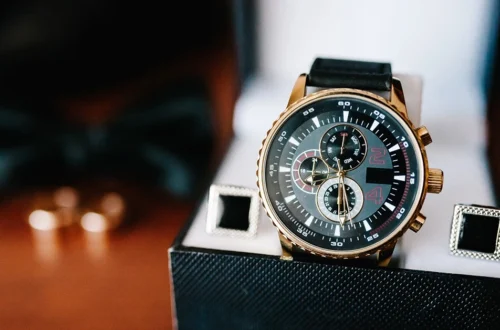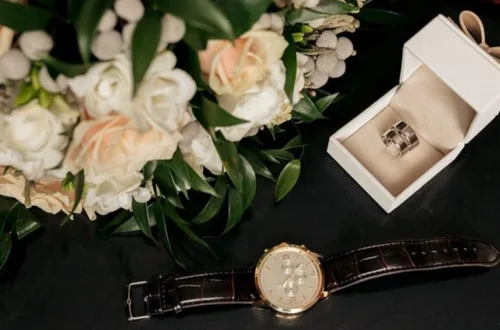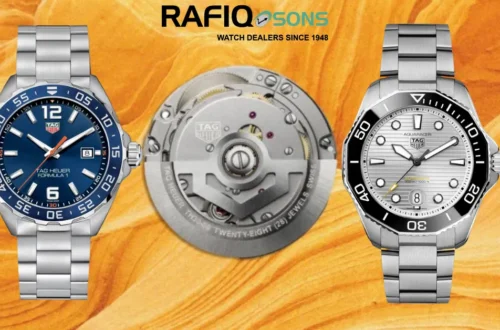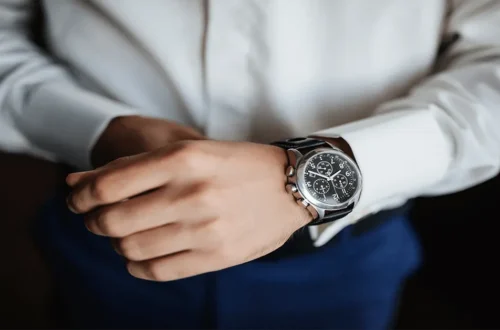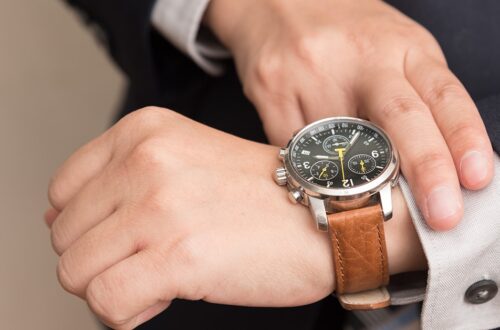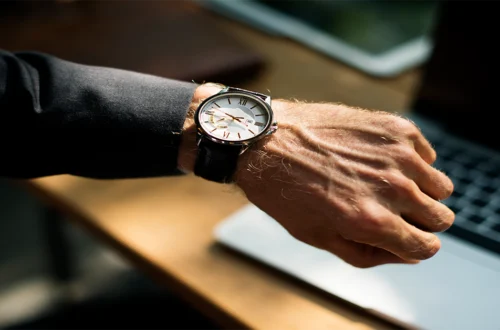Timepieces have long represented elegance, refinement, and skill more than just telling the time. Famous gentlemen have worn a variety of renowned men’s watch designs on their wrists over the years, each with its own charm and backstory. Men’s watches have a long history dating back to the early 1800s, when Abraham-Louis Breguet created the first wristwatch in 1810 for the Queen of Naples. But in the early 1900s, men’s perceptions about wearing timepieces on their wrists started to change, and Breguet’s pocket watch for Queen Caroline Murat of Naples served as the model for this cultural revolution.
In the past, men used to carry small clocks on chains and hooks, which they kept in their vest pockets. But when women wanted to carry clocks too, it was tricky. Their fancy dresses didn’t have pockets! So, watchmakers made special watches that looked like jewelry. These watches were like small clocks hanging from pretty bracelets, pins, or necklaces.
Early Innovations
The development of the mainspring in the fifteenth century was one of the major advances in portable timekeeping that contributed to the centuries-long history of men’s timepieces. These antique timepieces, which were frequently worn as pocket watches, were exquisite marvels of mechanical creativity with finely detailed mechanisms.
Technological Advancements
Over time, watches got better because of new technology. The balance spring became more accurate, and watches started winding themselves, so people didn’t have to do it manually. In the middle of the 20th century, quartz technology made watches very accurate and reliable, and many watches started using quartz instead of older methods.
Design Evolution
Alongside technological advancements, men’s watch designs underwent significant evolution. Sports and underwater activities may use watches with water-resistant casings, and chronograph features allowed for accurate timekeeping. The use of non-traditional materials in watch designs, such as carbon fiber, titanium, and ceramic, added new levels of style and durability.
Cultural Influences
Watch designs have always been greatly influenced by cultural trends and influences. Watches with elaborate designs and priceless materials exuded elegance and opulence during prosperous economic times. On the other hand, more practical and functional watch designs emerged during harsh times. Timepieces were influenced by cultural movements such as the Art Deco period, which saw a rise in the use of geometric designs and vivid colors.
Iconic Designs Through History
Several iconic men’s watch designs have stood the test of time and become symbols of elegance and sophistication. Every classic design, from the sporty appeal of the fossil Speedmaster to the ageless beauty of the Rado Submariner, narrates a tale of creativity, skill, and eternal style.
20th Century Watches
Today’s watches keep changing with advanced technologies, innovative designs, and a reflection of modern cultural influences. Watches are now more than just timepieces thanks to innovations like smartwatches that track our health and connect to our phones. They are now interactive tools for everyday life. Modern timepieces have sleek, simple designs and frequently use materials like titanium, ceramic, or stainless steel for their style and longevity.
Last Note
Exploring famous men’s watches shows how technology, design, and culture mix in making watches. These watches not only tell time but also tell stories about how clever and creative people can be. As we see new inventions and styles in watches, famous men’s watches keep being known for their timeless beauty and style.







